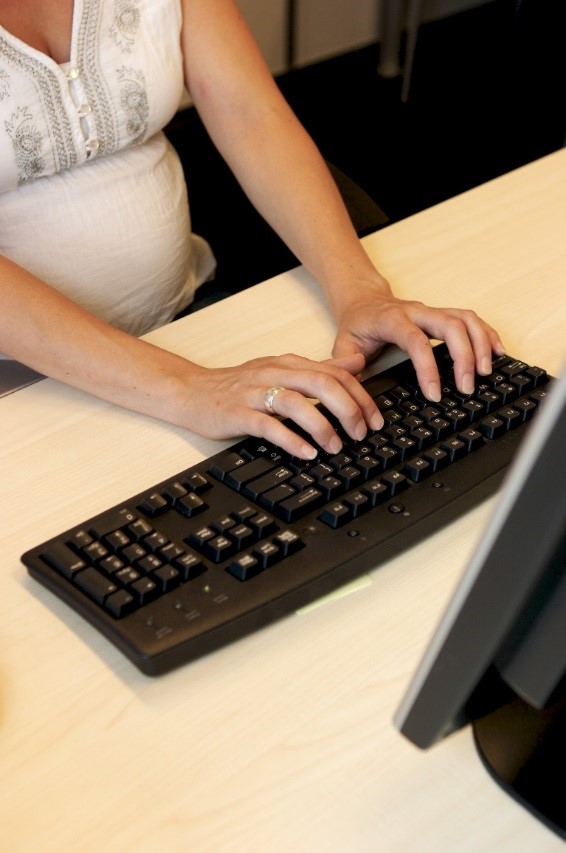 General health
General health
guidelines suggest that sedentary office work is safe for pregnant women and their unborn children, provided there are no pregnancy complications. However, the physical changes that occur for a women’s body do have an impact on postural and work outcomes, and this may increase the risk of musculoskeletal discomfort/injury. In this blog, we outlines these changes and relevant considerations for the pregnant office worker.
The first and most obvious change occurring for a pregnant woman’s body is increasing abdominal girth. This results in increased reaching distance to the input devices, which can put a worker at risk because of awkward postures. The risk level associated with these postures is further increased if combined with other hazards like repetition.
Important Consideration:
-
- A pregnant worker, especially in the later stages of pregnancy, should ensure that all frequently used items like the keyboard, mouse and telephone are positioned near the front of the desk edge to minimize the risk.
A less obvious physical change is that the body’s ligaments soften as a result of increased exposure to female sex hormones like estrogen. This helps to loosen the pelvic joints for child birth. However, this also makes mobile joints like the shoulder, knee, and back more susceptible to injury.
Important Considerations:
To prevent undue strain on softened ligaments, awkward postures of the back, knees, and shoulders should be avoided by:
-
- Standing to access overhead bins to prevent an over shoulder reach.
- Preventing the knees from moving beyond the ankles when bending to access lower shelves.
- Avoiding lifting or lowering to/from the floor. This is due to increased risk for preterm labour or spontaneous abortion associated with women whose job required bending at the waist more than an hour a day, and because women in late stage pregnancy also report difficulty bending forward and picking objects up from the floor.
- Using good body mechanics when lifting (as outlined in part 2 of this blog).
- A supportive chair with the lumbar support, and proper adjustments should be used by the employee. Keep in mind that the lumbar curve will likely change as the woman’s body changes; therefore, the lumbar support should be adjusted in height and depth as the pregnancy progresses.
Another change that occurs is an increased risk of falls due to a shift of the center of gravity forward as the baby increases in size and weight.
Important Considerations:
-
- Pregnant office workers should avoid using step-stools due to reduced balance and increased risk of falling.
- Pregnant women should also take care to remove trip hazards at home and at work. For example, removing throw rugs and power cords in walkways.
One last change that many pregnant women can attest to is increased fluid retention. This puts the pregnant women at risk for swelling of the hands and feet. This can influence risk for conditions like carpal tunnel syndrome, or peripheral blood pooling.
Important Considerations:
Minimize repetitive activity by taking frequent micro-breaks every 30 minutes to stand and stretch or to take a brief walk.
Consider elevating the legs for a 10 to 15 minutes on each hour and taking a short walk once an hour to minimize leg swelling.
In next week’s blog, we will discuss safe lifting limits for pregnant women in the office setting .
For more information on this topic and others feel free to contact EWI Works at info@ewiworks.com or 780 436 0024 in Edmonton and 403 802 0886 in Calgary.
References:
Waters TR, MacDonald LA, Hudock SD, Goddard DE. Provisional Recommended Weight Limits for Manual Lifting During Pregnancy. Human Factors: 56(1): 2014: 203-214

